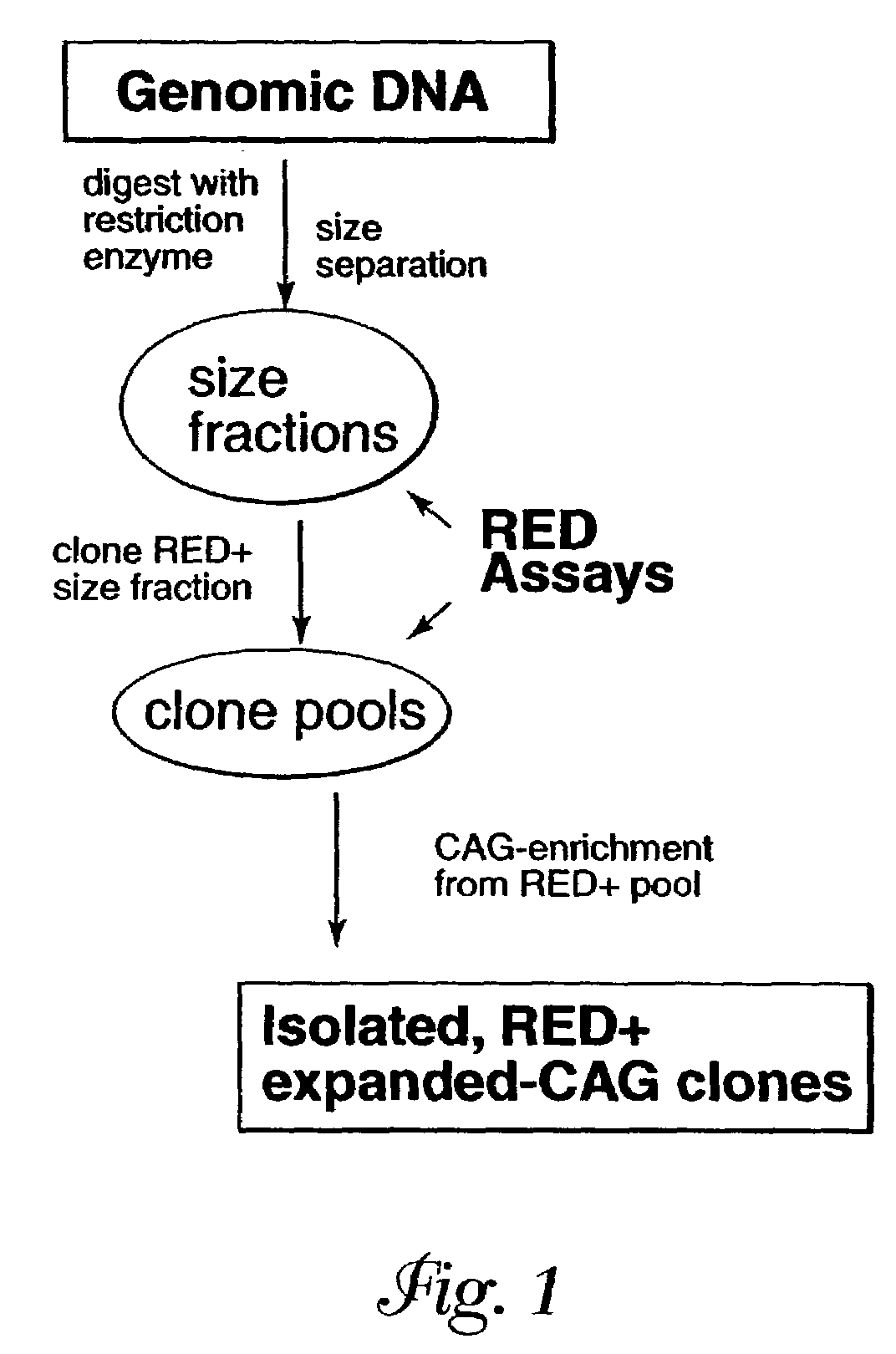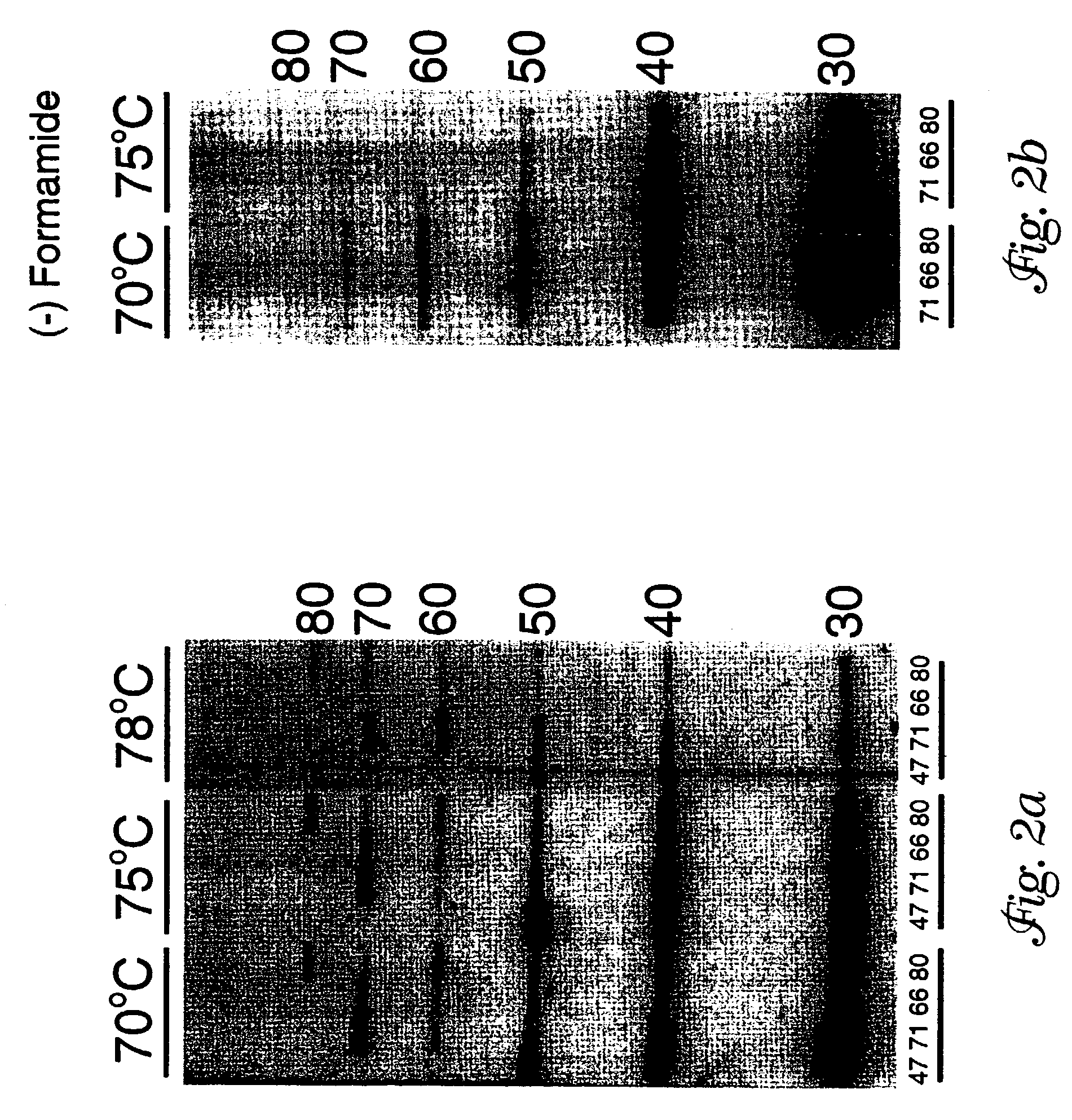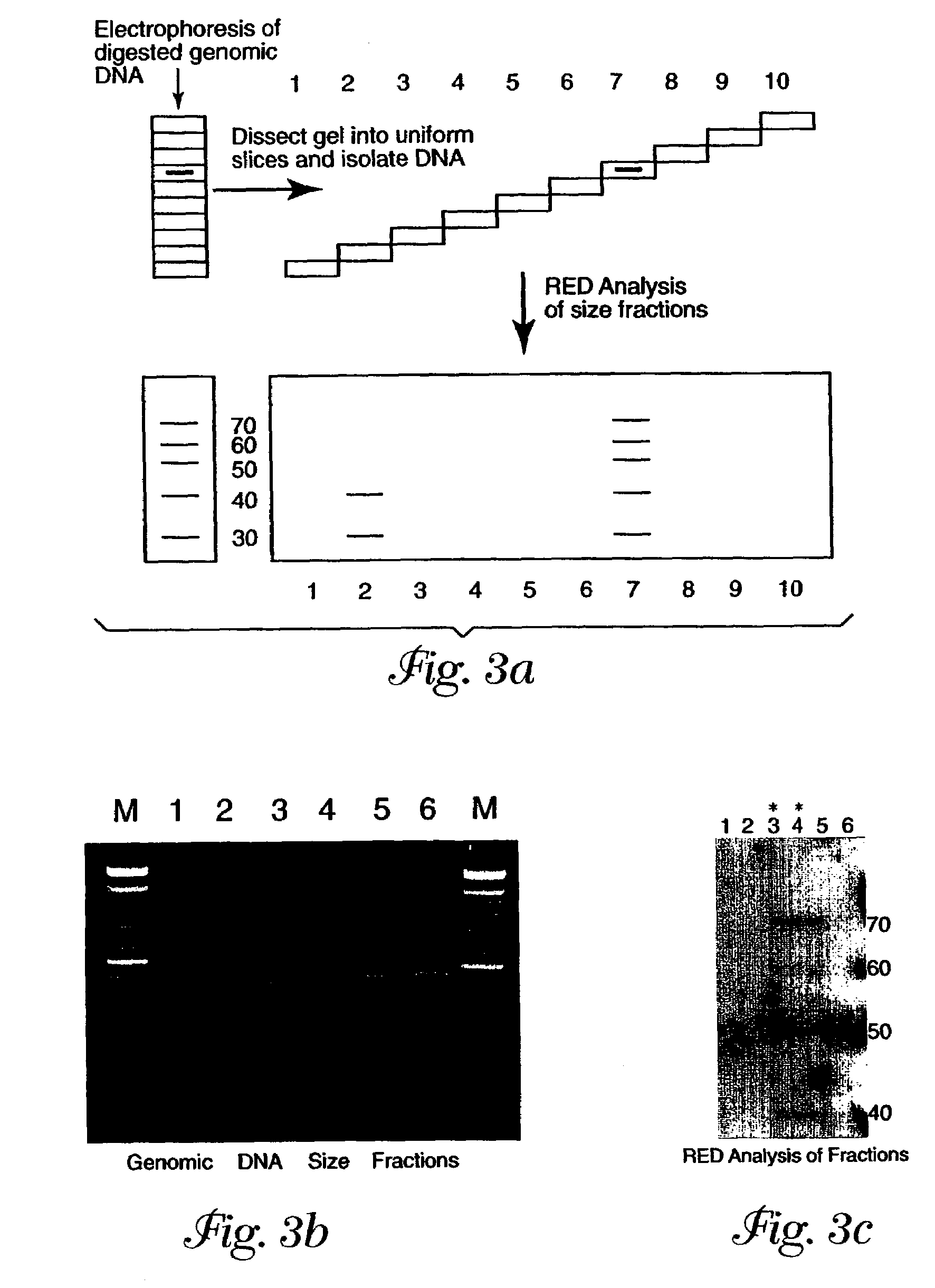SCA7 gene and methods of use
a technology of sca7 and gene, applied in the field of sca7 gene, can solve problems such as complete disability, and achieve the effect of reducing the rate of temperature change from the denaturation temperatur
- Summary
- Abstract
- Description
- Claims
- Application Information
AI Technical Summary
Benefits of technology
Problems solved by technology
Method used
Image
Examples
Embodiment Construction
[0022]The hereditary ataxias are a complex group of neurodegenerative disorders all characterized by varying abnormalities of balance attributed to dysfunction or pathology of the cerebellum and cerebellar pathways. In many of these disorders, dysfunction or structural abnormalities extend beyond the cerebellum and may involve basal ganglia function, oculo-motor disorders and neuropathy. Substantial efforts have been made to determine the genetic bases of the spinocerebellar ataxias (SCAs). SCA genes have been identified on different chromosomes and have different conserved sequences. While all contain CAG DNA repeats that are associated with disease when the repeat is expanded, the underlying mechanism leading to neurodegeneration is unknown. Moreover, the high phenotypic variability within single SCA pedigrees has made clinical classification of different forms of ataxia difficult.
[0023]The gene for SCA type 7 has been identified and isolated. The isolation of the SCA7 gene allows...
PUM
| Property | Measurement | Unit |
|---|---|---|
| Size | aaaaa | aaaaa |
Abstract
Description
Claims
Application Information
 Login to View More
Login to View More - R&D
- Intellectual Property
- Life Sciences
- Materials
- Tech Scout
- Unparalleled Data Quality
- Higher Quality Content
- 60% Fewer Hallucinations
Browse by: Latest US Patents, China's latest patents, Technical Efficacy Thesaurus, Application Domain, Technology Topic, Popular Technical Reports.
© 2025 PatSnap. All rights reserved.Legal|Privacy policy|Modern Slavery Act Transparency Statement|Sitemap|About US| Contact US: help@patsnap.com



